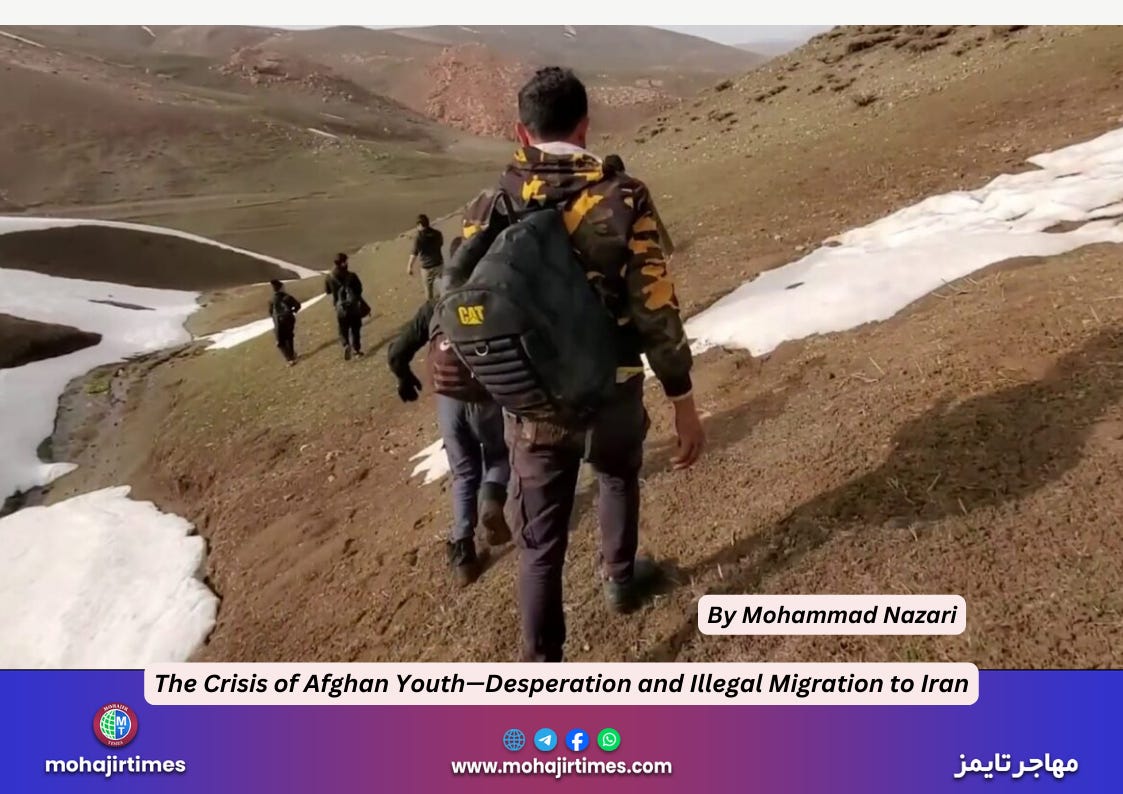The Crisis of Afghan Youth—Desperation and Illegal Migration to Iran
Migration to Iran does not mark the end of their struggles. Upon arrival, many Afghan youths face social, economic, and even legal injustices
By Mohammad Nazari
Today, Afghanistan youth face significant challenges that have profoundly affected their lives and futures. Following the fall of the previous government and the Taliban's rise to power in 2021, many social, educational, and economic opportunities have disappeared.
Unemployment, poverty, and a lack of hope for a brighter future are among the key factors driving Afghanistan youth into desperate situations. In this context, many have sought to leave the country, with neighboring Iran being a prime destination, often through illegal and dangerous means.
Reasons Behind Youth Migration
One of the main reasons Afghanistani youth migrate is the dire economic situation within the country. Since the Taliban's takeover, Afghanistan's economy has suffered severe stagnation. Many businesses have shut down, banks have ceased operations due to international sanctions, and foreign aid has been cut off. As a result, young people, who were already grappling with unemployment, have found themselves completely excluded from the job market, leaving them with no means to meet their basic needs.
Additionally, the Taliban's social and cultural policies, particularly strict restrictions on education, have severely limited educational and employment opportunities, especially for women and girls. Many young people, unable to access education, seek better futures abroad. With hopes of working or studying in countries like Iran or Turkey, they embark on migration journeys.
The Perilous Journey to Iran
Iran is one of the primary destinations for Afghanistan youth. Due to its geographical proximity and the large Afghanistani migrant population already residing there, it has become a popular choice for migration. However, migration to Iran is often illegal and facilitated through human trafficking networks, as many young people lack the financial resources or legal documentation to obtain visas or official permits.
The trafficking routes, controlled by human smugglers, are fraught with dangers. Migrants face risks such as arrest by border forces, mistreatment by smugglers, and being subjected to inhumane conditions. Smugglers exploit the desperation and ignorance of these young people, putting them on treacherous paths that endanger their lives. Reports indicate that hundreds of Afghan youth have perished along these smuggling routes—youth who left their homeland in hopes of a better future but never reached their destination.
The Harsh Realities for Afghan Migrants in Iran
Migration to Iran does not mark the end of their struggles. Upon arrival, many Afghan youths face social, economic, and even legal injustices. A significant number of Afghanistani migrants are forced into hard, grueling labor for meager wages. They work in farms, workshops, and factories without access to basic human rights such as insurance, leave, or proper working conditions.
In addition, they endure various forms of social discrimination. In many cases, Afghan migrants without legal documents are pursued by authorities and face the risk of deportation. This situation leaves them feeling devalued and helpless, making their living conditions extremely difficult. Many are forced to live in impoverished areas with limited access to healthcare and education services.
Legal Challenges and Lack of International Support
Illegal and smuggled migration places Afghan youth in highly vulnerable positions, where they receive little protection, both in their host countries and at the international level. Due to their lack of legal documentation, many migrants are unable to defend their rights and are subject to various forms of exploitation. Furthermore, international organizations, constrained by limited resources and inadequate attention to the plight of Afghan migrants, have been unable to provide effective support.
Need for Change and International Assistance
To alleviate the crisis of Afghanistani youth migration, action is needed at several levels. Domestically, Afghanistan must create job, economic, and educational opportunities for its youth to prevent despair and migration. This requires international support and collaboration with governments and humanitarian organizations.
Regionally, neighboring countries, especially Iran, should adopt more supportive and humane policies toward Afghan migrants. Improving working conditions and reducing social discrimination could help ease the hardships faced by migrants. Additionally, international organizations, such as the United Nations and human rights bodies, must closely monitor the situation of migrants and provide greater legal and humanitarian support.
Conclusion
The crisis of Afghanistan youth and their illegal migration to Iran is a serious alarm that requires immediate attention and action. If the plight of these young people is not addressed today, we will face even greater and more complex crises in the future. The insecurity of migration and the injustices these youth encounter in their destination countries demand a coordinated and joint response from governments and the global community.





